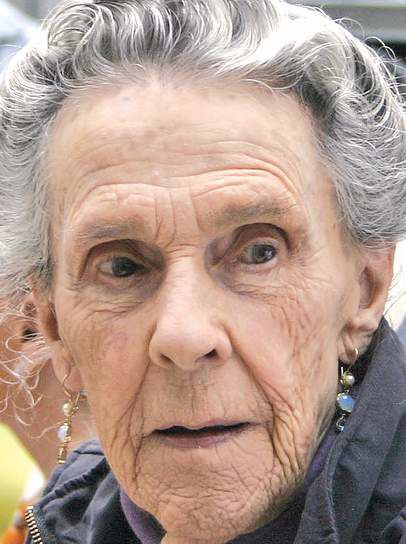Leonora Carrington, 94; among early surrealists
Published 5:00 am Friday, May 27, 2011

- Leonora Carrington in 2005
Leonora Carrington, a British-born surrealist and onetime romantic partner of Max Ernst whose paintings depicted women and half-human beasts floating in a dreamscape of images drawn from myth, folklore, religious ritual and the occult, died Wednesday in Mexico City, where she lived. She was 94.
The cause was pneumonia, said Wendi Norris, the co-owner of Frey Norris Contemporary and Modern gallery in San Francisco.
Carrington, one of the last living links to the world of Andre Breton, Man Ray and Miro, was an art student when she encountered Ernst’s work for the first time at the International Surrealism Exhibition in London in 1936. A year later she met him at a party.
The two fell in love and ran off to Paris, where Ernst, more than 25 years her senior, left his wife and introduced Carrington to the surrealist circle.
“From Max I had my education,” she told The Guardian of London in 2007. “I learned about art and literature. He taught me everything.”
She became acquainted with the likes of Picasso, Dali and Tanguy. With her striking looks and adventurous spirit, she seemed like the ideal muse, but the role did not suit her. Miro once handed her a few coins and told her to run out and buy him a pack of cigarettes.
“I gave it back and said if he wanted cigarettes, he could bloody well get them himself,” she told The Guardian. “I wasn’t daunted by any of them.” Encouraged by Ernst, she painted and wrote. In 1939 she produced her first truly surrealist work, “The Inn of the Dawn Horse (Self-Portrait).” Now in the collection of the Metropolitan Museum of Art, it shows an androgynous-looking woman seated in a room with a rocking horse on the wall, extending her hand to a hyena.
Her interest in animal imagery, myth and occult symbolism deepened after she moved to Mexico and entered into a creative partnership with the emigre Spanish artist Remedios Varo. Together the two studied alchemy, the kabbalah and the Guatemalan mytho-historical writings Popol Vuh.
“She was a seeker and a searcher,” said Whitney Chadwick, a professor of art at San Francisco State University and the author of “Women Artists and the Surrealist Movement” (1991). “In her work, she always sought to define moments when one plane of consciousness blends with another.”
In the 1940s and ’50s, Carrington made a small number of carved wooden sculptures, and in her 80s and 90s she produced large-scale bronze sculptures of fantastical quasi-human forms, both comic and horrific, like “How Doth the Little Crocodile.” Located on one of Mexico City’s most prominent avenues, that work depicts a lizardlike oarsman steering a crocodile vessel and its four lizardy passengers on a voyage to places unknown.
Leonora Carrington was born April 6, 1917, in Clayton Green, Lancashire. Her father was a wealthy textile manufacturer, and she grew up in a grand house, where her Irish nanny entranced her with folk tales.
Her parents, both Roman Catholic, sent her to convent schools, from which she was expelled for eccentric behavior. At their wits’ end, they sent her to study at Mrs. Penrose’s Academy of Art in Florence. On returning to Britain, she enrolled in the art school recently established by French modernist Amedee Ozenfant.






